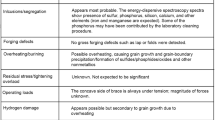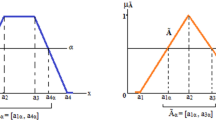Abstract
The success of a company depends on customer’s satisfaction: quality, price, and service. These three goals depend in particular on R.A.M.S. characteristics: reliability, availability, maintainability, and safety. In the last few years, in order to guarantee high standards of reliability and maintainability, new methodologies and techniques have been developed to estimate the R.A.M.S. targets. In particular, the reliability target represents both the starting and the ending point of R.A.M.S. analysis. The design of the reliability target of a system is a crucial aspect of reliability analysis, as it affects the performance of the system and components. This paper aims to develop a new approach called “IFM Target,” to define the reliability target for complex systems through the integrated factors method, to combine the advantages of usually used approaches, and to overcome some criticalities highlighted in a careful literature analysis. The proposed method has been applied on a sintering system. The results show the effectiveness of the proposed approach.



Similar content being viewed by others
References
S.M. Roman, A.E. Simon, D. Dumitrascu, B. Lepadatescu, System reliability assessment—Fault tree analysis (FTA), in Annals of DAAAM and Proceedings of the International DAAAM Symposium, 2006
D.M. Shalev, J. Tiran, Condition-based fault tree analysis (CBFTA): A new method for improved fault tree analysis (FTA), reliability and safety calculations. Reliab. Eng. Syst. Saf. 92(9), 1231–1241 (2007)
K.K. Aggarwal, Reliability Engineering (Kluwer Academic Publishers, Dordrecht, 1993)
S.H. Dai, M.O. Wang, Reliability analysis in engineering applications (Van Nostrand Reinhold, New York, 1992)
Advisory Group of Reliability of Electronic Equipment (AGREE), Reliability of Military Electronic Equipment (Office of the Assistant Secretary of Defense Research and Engineering, Washington, DC, 1957)
W.H. Alven, Reliability engineering: Prepared by ARINC research corporation (Prentice Hall Inc, Englewood Cliff, NJ, 1964)
V.J. Bracha, The methods of reliability engineering. Mach. Des., 70–76 (1964)
E.D. Karmiol, Reliability apportionment. Preliminary Report EIAM-5, Task II, General Electric, Schenectady, NY, 1965, pp. 10–22
R.T. Anderson, Reliability design handbook (ITT Research Institute, Chicago, 1976)
Department of Defense of USA. MIL-HDBK-338B, Electronic Design Reliability Handbook, 1988, pp. 6/13–6/16
K. Smedley, Reliability analysis for LEB ring magnet power system in SSC. IEEE Trans. Nucl. Sci. 39(4), 1170–1174 (1992)
H.E. Kuo, Reliability Assurance: Application for Engineering and Management, 2nd edn. (Chinese Society for Quality, 1999) pp. 3/16–3/23
D. Falcone, F. De Felice, G. Di Bona, A. Silvestri R.A.M.S. Analysis in a sintering plant by the employment of a new Reliability Allocation Method Modelling and Simulation 2004 Marina del Rey, CA, USA 1-3 marzo 2004.
F. De Felice, D. Falcone, A. Silvestri, G. Di Bona, Proposal of a new reliability allocation methodology: the Integrated Factors Method. Int. J. Oper. Quant. Manag. 16(1), 67–85 (2010)
G. Di Bona, V. Duraccio, A. Silvestri, A. Forcina, D.Falcone. F. De Felice, Validation and application of a reliability allocation technique (advanced integrated factors method) to an industrial system, in Proceedings of the IASTED International Conference on Modelling, Identification, and Control, MIC 2014 Innsbruck, Austria, 17 February 2014 through 19 February 2014, pp. 75–79
C.H. Cheng, J.R. Chang, MCDM aggregation model using situational ME-OWA and ME-OWGA operators. Fuzziness Knowl. Syst. 14(4), 421–443 (2006)
K.H. Chang, C.H. Cheng, Y.C. Chang, Reliability assessment of an aircraft propulsion system using IFS and OWA tree. Eng. Optim. 40(10), 907–921 (2008)
Y.C. Chang, K.H. Chang, C.S. Liaw, Innovative reliability allocation using the maximal entropy ordered weighted averaging method. Comput. Ind. Eng. 57, 1274–1281 (2009)
C.S. Liaw, Y.C. Chang, K.H. Chang, T.Y. Chang, ME-OWA based DEMATEL reliability apportionment method. Expert Syst. Appl. 38, 9713–9723 (2011)
R.R. Yager, On ordered weighted averaging aggregation operators in multicriteria decision making. IEEE Trans. Syst. Man Cybern. 18(1), 183–190 (1988)
O. Kim, Y. Yang, M.J. Zuo, A new reliability allocation weight for reducing the occurrence of severe failure effects. Reliab. Eng. Syst. Saf. 117, 81–88 (2013)
O.P. Yadav, N. Singh, P.S. Goe, Reliability demonstration test planning: a three dimensional consideration. Reliab. Eng. Syst. Saf. 91, 882–893 (2006)
O.P. Yadav, System reliability allocation methodology based on three-dimensional analyses. Int. J. Reliab. Saf. 1, 360–375 (2007)
O.P. Yadav, X. Zhuang, A pratical reliability allocation method considering modified critically factors. Reliab. Eng. Syst. Saf. 129, 57–65 (2014)
J.B. Bowles, An assessment of RPN prioritization in a failure modes effects and criticality analysis, in Processing Annual Reliability and Maintainability Symposium, 2003, pp. 380–386
R.R. Itabashi-Campbell, O.P. Yadav. System reliability allocation based on FMEA criticality, SAE Technical Paper, 2009-01-0202; 2009
Department of the Army. TM 5-689-4. Failure modes, effects and criticality analysis (FMECA) for command, control, communications, computer, intelligence, surveillance, and reconnaissance (C4ISR) facilities; 2006
G. Di Bona, V. Duraccio, A. Forcina, A. Silvestri, D. Falcone, C. Cerbaso, A new method for reliability allocation: critical flow method. in 9th WCEAM Research Papers Part of the Series Lecture Notes in Mechanical Engineering, pp. 249–261
G. Di Bona, A. Forcina, A. Silvestri, Critical flow method: a new reliability allocation approach for a thermonuclear system. Quality and Reliability Engineering International 32(5), 1677–1691 (2015)
J.A. Boyd, Allocation of reliability requirements: a new approach, in Proceedings of Reliability and Maintainability Symposium, January 21–23 (Las Vegas, NE, 1992) pp. 5–6
R. Fuller, P. Majlender, An analytic approach for obtaining maximal entropy OWA operator weights. Fuzzy Sets Syst. 124(1), 53–57 (2001)
M. O’Hagan, Aggregating template or rule antecedents in real-time expert systems with fuzzy set logic, in Proceedings of 22nd Annual IEEE Asilomar Conference on Signals, Systems, Computers, Pacific Grove, CA, Piscataway (IEEE, NJ, 1988), pp. 681–689
M. Tucci, F. De Carlo, O. Borgia, N. Fanciullacci, Accelerated degradation tests for reliability estimation of a new product: a case study for washing machines. Proc. Inst. Mech. Eng. Part O 228(2), 127–138 (2014)
F. De Carlo, O. Borgia, M. Tucci, Risk-based inspections enhanced with Bayesian networks. Proc. Inst. Mech. Eng. Part O 225(3), 375–386 (2011)
G. Di Bona, A. Forcina, A. Silvestri, A. Petrillo, A-IFM reliability allocation model based on multicriteria approach. Int. J. Qual. Reliab. Manag. 33(5), 676–698 (2016)
Author information
Authors and Affiliations
Corresponding author
Rights and permissions
About this article
Cite this article
Di Bona, G., Silvestri, A., Forcina, A. et al. Reliability Target Assessment Based on Integrated Factors Method (IFM): A Real Case Study of a Sintering Plant. J Fail. Anal. and Preven. 16, 1038–1051 (2016). https://doi.org/10.1007/s11668-016-0182-2
Received:
Revised:
Published:
Issue Date:
DOI: https://doi.org/10.1007/s11668-016-0182-2




